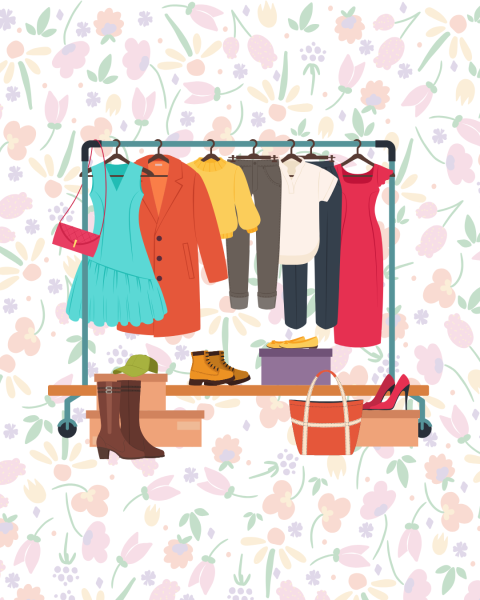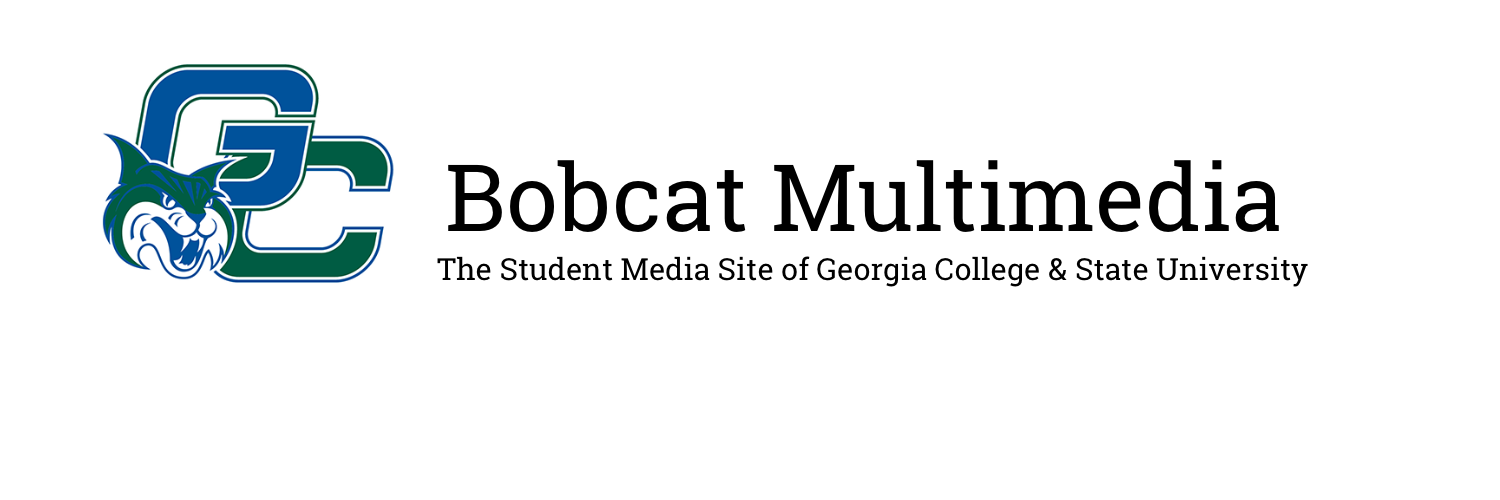
Spring has officially sprung, and with the weather heating up, the seasonal fashion is slowly transitioning.
Fashion is constantly changing, and predictions for each season are imminent. Fashion cycles often repeat in 20-year increments.
This is noticeable in the current Y2K trend, a term for the fashion and aesthetic of the 2000s. While 90s and 2010s fashion is still in, Y2K fashion has especially taken over social media.
Fashion can also be affected by a region’s economic or political state. For instance, some believe that when economic times get worse, skirts tend to become longer, something referred to as the “hemline index.”
As economic status gets worse, conservatism tends to become more popular, which can lead to more modest fashion becoming trendy.
“I feel like modesty is coming back,” said Ella Swartz, a senior psychology major.
Tradwives and modesty influencers have been rising in popularity on TikTok and Instagram in recent years.
“I think long flowy clothing is in, and maybe baggy clothing might come back,” Swartz said.
Students have expressed that there might be foreign influences that become trendy, but only specific styles versus foreign fashion in general.
Evangelina Ochoa, a sophomore Spanish major, believed that specifically Scandinavian influences might come in style.
“I think we could see Parisian spring or Italian summer styles,” Swartz said. “Elegant styles, neutrals, linen and flowy clothes, I think will be in.”
Pantone, a company that developed a standardized color matching system, announced in Dec. of 2024, that the color of the year would be mocha mousse. Many predicted that bright colors would dominate 2025, but soft neutrals might be more popular than people thought.
With the 2024 pop culture phenomenon of Brat summer coming to an end, some felt that neon or bright colors were going to be trending, but Pantone’s color might be more accurate than originally thought.
While pastels and soft colors tend to always trend in spring clothing, there are some interesting trends this fashion season.
Many sites, such as NYTimes, Vogue and Glamour, have predicted simple styles with neutral or pastel colors to be trending. All three sites make a commission on products sold, which can lead to potential bias in the colors or styles.
Behind green and brown in popularity were traditional spring colors, such as lighter pinks, baby blues, whites and yellows.
GCSU students agreed that simple styles with neutrals or pastels would trend this Spring, but there were some variations in opinion.
“It’s not a trend; green, yellow and pink are just spring colors,” Swartz said.
Ochoa felt that it might be more about tones than colors, and that we could normally see fall-themed colors continuing into spring.
“Warm colors will definitely be the vibe for 2025,” Ochoa said.
Across both social media and fashion sites, beige and light brown were strongly trending, a trend that did not go unnoticed by GCSU students. The use of certain colors can be linked back to certain trends or aesthetics like modest fashion and the clean girl look.
Clean girl is a style that is focused on simple, neutral-colored clothing and dewy “no-makeup makeup” looks. It often includes slicked back ponytails or buns, light brown or white outfits with jeans and natural-looking makeup.
Many influencers and stars have possibly affected fashion trends, whether intentionally or not.
Selena Gomez has been doing the clean girl style for a while, while Billie Eilish has worn baggy alternative streetwear for years.
Swartz predicted that there would be baby pinks and lots of lace this spring.
“I never thought about it, but it could be related to Sabrina Carpenter,” Swartz said. “A lot of her fans have the clean girl aesthetic too.”
Carpenter has worn a lot of pastels or bright pinks, yellows and blues recently on her “Short n’ Sweet” tour.
Many people also noted an uptick in thrifting and predicted this would continue to become more popular.
“Thrifting is popular; clean girl is definitely still rising too,” said Justine Savizon, a health promotion postgraduate student.
The style boho, short for bohemian, is also predicted to trend. Similar to the clean girl, boho combines many characteristics that people thought would start trending or are already trending, such as neutral colors, flowy clothing and patterns.
“Boho never left; it’s only popular with a specific demographic, but it never really left,” Savizon said. “I could see maybe tie-dye or crazy patterns coming into style.”
Nikki Ofori, a senior public health major, agreed that boho was strongly in and that patterns might trend this spring season.
“I see people getting into patterns as well, like florals, gingham or cherry,” Ofori said.
Predicting trends becomes harder with fashion and social media’s prescribed micro trends, a term for a trend that is niche and short-lived, sometimes lasting only months or even weeks.
Some students brought up barrel jeans, neon suede shoes or micro shorts, but there were no shared answers between students on examples of micro trends.
“I really like the concept of microtrends and how it affects a generation as a whole,” Ochoa said.
As micro trends are so fleeting and happening only on certain platforms or spaces, there are many micro trends happening at once, and it becomes difficult to determine what even counts as a micro trend.
“There are so many microtrends it’s hard to pinpoint,” Swartz said. “Microtrends can be fun, but I don’t like overconsumption. Be sustainable and thrift instead.”
Savizon felt that overconsumption itself was almost a trend. While students had many opinions on whether microtrends were fun or concerning, what is clear is that microtrends will not be going away any time soon.
Unlike the decades before the rise of the internet, fashion has become diverse with the influence of today’s media environment. While fashion trends used to be more uniform, the rise of the internet lets everyone self-separate into filter bubbles based on their interests.
What one person perceives as trending may not be what the next person thinks is trending due to using different social media or different algorithms. This raises the question of how to accurately predict trends as our media environment continues to widen and diversify.

